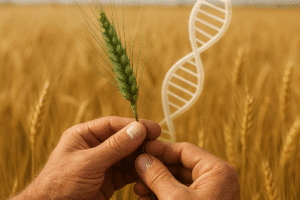The global interplay between grain production and energy markets has become increasingly significant for policymakers, traders, and consumers alike. As agricultural yields feed into rising demands for food and fuel, understanding this connection is crucial to anticipate price swings, craft effective regulations, and bolster economic resilience. This article delves into core aspects shaping the relationship between these two vital sectors.
Grain Market Fundamentals and Supply Dynamics
At the heart of any discussion on agriculture, the grain market comprises staple commodities such as wheat, corn, rice, and soybeans. These crops are cultivated worldwide, yet output is subject to fluctuating weather patterns, changing land use, and evolving farming practices.
Global Production Trends
- Major producers: The United States, China, Brazil, and India dominate global commodities output.
- Technological advances: Precision agriculture, drought-resistant seeds, and mechanization boost yields but may raise input costs.
- Climate variability: Droughts, floods, and extreme temperatures can cut harvests by 10–30% in afflicted regions.
Demand Drivers
- Population growth: An expanding global population increases food caloric requirements and protein demand.
- Dietary shifts: Wealthier societies often consume more meat, driving up demand for animal feed made from feedstock grains.
- Industrial uses: Corn and wheat find applications in sweeteners, starches, and bio-based materials, linking agriculture with manufacturing industries.
Supply chain disruptions—ranging from logistical bottlenecks to geopolitical tensions—amplify price volatility and can trigger ripple effects across downstream markets.
The Intersection of Energy Markets and Agricultural Commodities
The expansion of biofuel production has forged a direct link between grain supplies and global fuel markets. Crops like corn and sugarcane are increasingly transformed into ethanol, while vegetable oils serve as feedstock for biodiesel.
Biofuel Mandates and Incentives
- Mandates: Many countries enforce blending requirements (e.g., 10% ethanol in gasoline) to curb greenhouse gas emissions.
- Subsidies: Financial incentives encourage farmers to allocate acreage for biofuel crops rather than purely food-oriented plantings.
- Carbon pricing: Emission trading schemes elevate the economic appeal of renewable alternatives.
Price Correlations and Spillover Effects
When oil prices surge, biofuel becomes more competitive, driving grain demand upward. Conversely, cheap crude can dampen biofuel profitability and reduce agricultural feedstock consumption.
- Oil–corn ratio: A key indicator comparing crude oil prices (per barrel) to corn prices (per bushel).
- Cross-commodity arbitrage: Traders exploit price differentials between sugar-based ethanol and ethanol from corn or cellulosic sources.
- Logistical complexities: Biofuel production sites often cluster near refineries, straining regional transportation networks.
Policy, Trade, and Environmental Impacts
Public policy profoundly shapes how grain and energy markets interact. From export restrictions to environmental regulations, governments can either stabilize or disrupt international flows.
Agricultural Trade Policies
- Export bans: In response to domestic shortages, some countries temporarily halt grain exports, tightening global supply.
- Tariff regimes: Import duties on biofuels can protect local industries but may invite retaliatory measures.
- Trade agreements: Regional pacts often include clauses for agricultural product quotas and quality standards.
Environmental and Social Considerations
- Land-use change: Converting forests into cropland undermines biodiversity and adds carbon emissions.
- Water scarcity: Intensive irrigation for high-yield crops stresses local aquifers and can worsen drought conditions.
- Rural livelihoods: Smallholders may benefit from higher grain prices but face risks if input costs rise too rapidly.
Efforts to promote sustainable agriculture—such as conservation tillage and precision irrigation—seek to balance productivity with resource conservation.
Risk Management and Future Outlook
Volatility in grain and energy prices underscores the need for robust risk mitigation strategies. Market participants, from farmers to multinational traders, rely on various tools to hedge exposure and forecast trends.
Hedging Instruments
- Futures contracts: Standardized agreements lock in prices for future delivery of grains or fuel.
- Options: Buyers purchase the right, but not the obligation, to buy or sell at a predetermined price, capping downside risk.
- Swap arrangements: Customizable over-the-counter deals exchange fixed and floating price exposures.
Technological Innovations
- Data analytics: Advanced algorithms ingest satellite imagery, weather forecasts, and trade flows to forecast yields.
- Blockchain: Immutable ledgers enhance traceability in food and fuel supply chains, improving transparency.
- Biotechnology: Genetically edited crops promise higher resilience but face regulatory hurdles in many jurisdictions.
Looking ahead, decarbonization pressures, demographic shifts, and evolving consumer preferences will continue to reinforce the bond between agricultural commodities and energy markets. Stakeholders equipped with interdisciplinary insights and adaptive strategies will be best positioned to navigate the complexities of these intertwined sectors.













